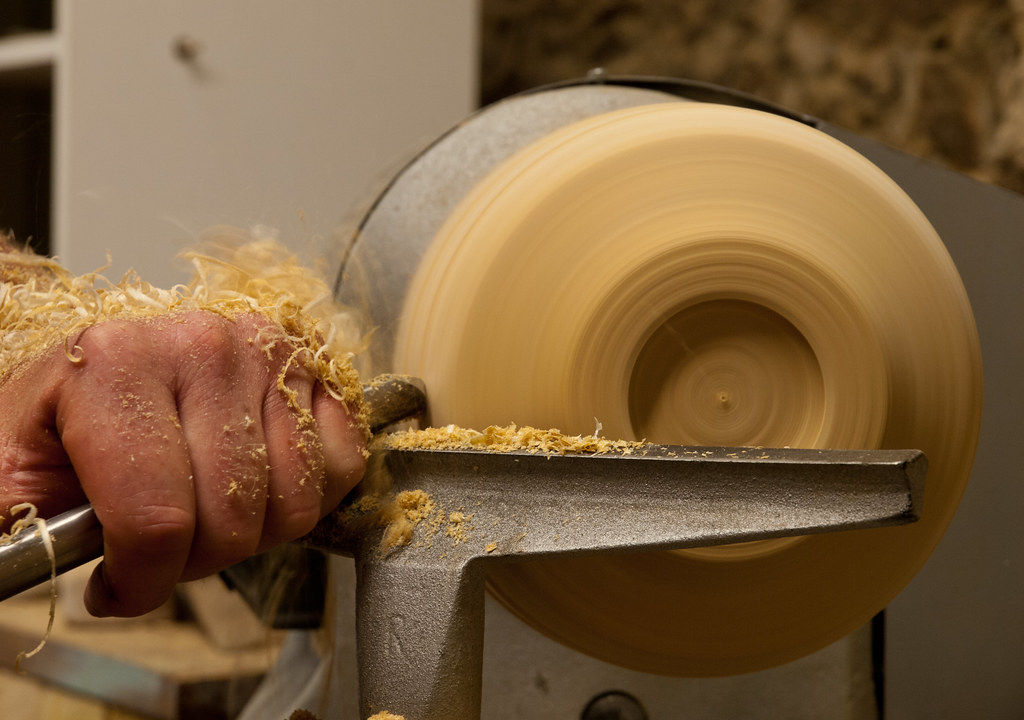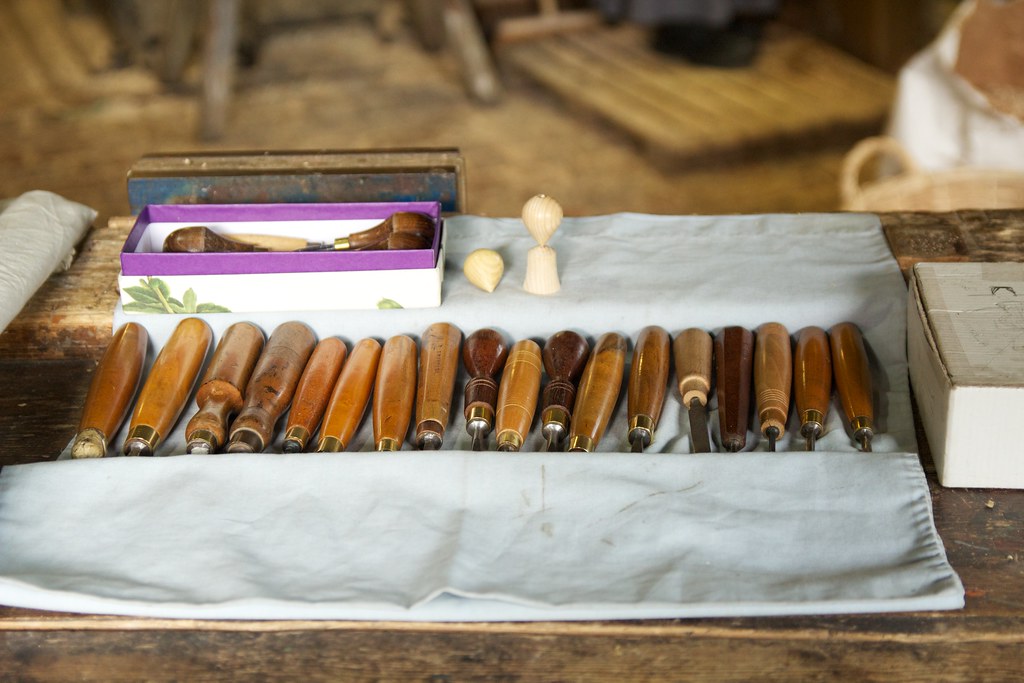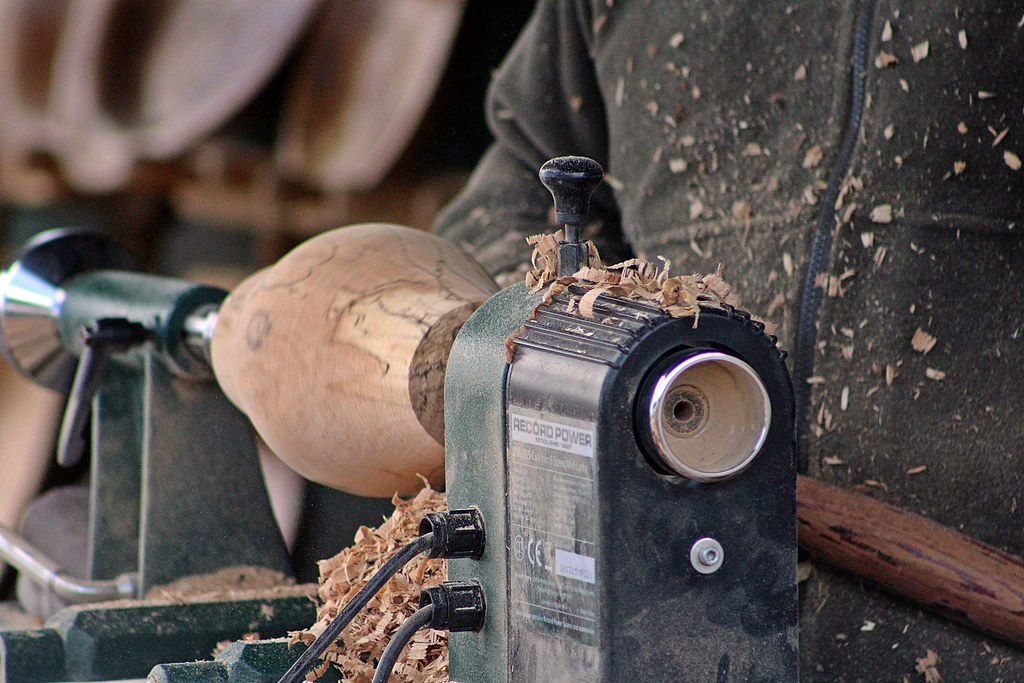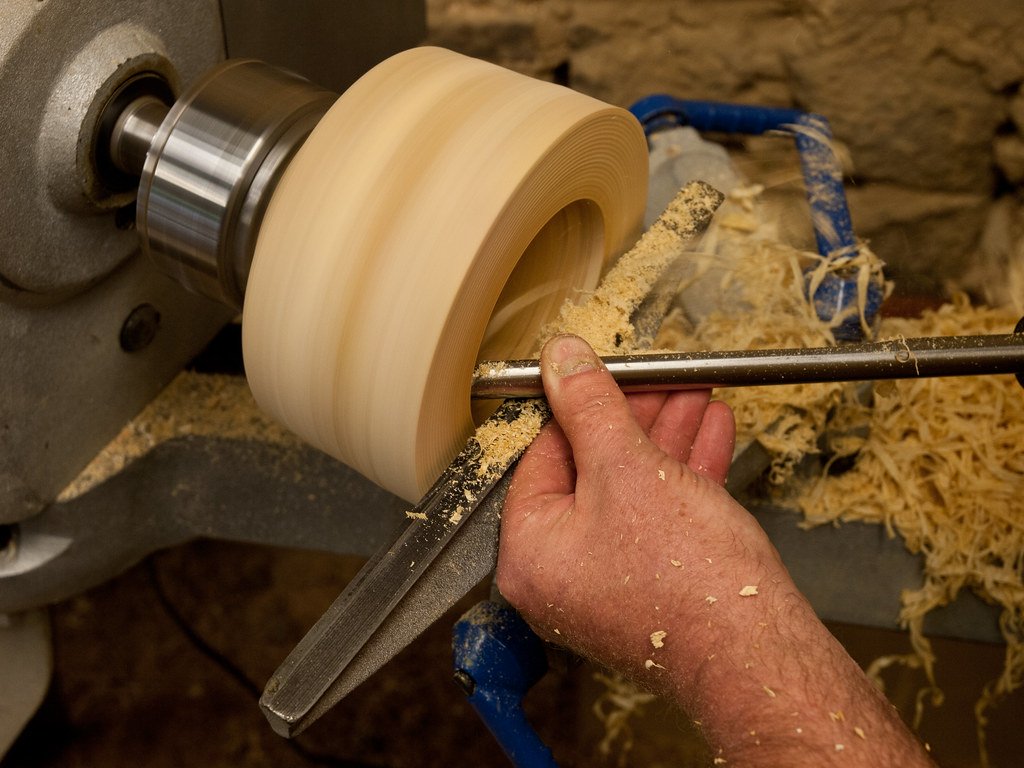Undoubtedly, woodturning is an ancient craft that involves using a lathe and often intrigues those who haven’t experienced it before.
I am often asked, “Is woodturning difficult?
The response, my friend, lies in the complexities of this fascinating field and the commitment it requires.
Today, I will walk you through the ins and outs of woodturning, providing you with valuable knowledge to help you determine if this craft is a challenging venture you would like to pursue.
Table of Contents
The Craft of Wood Turning

Woodturning is a way to shape wood by rotating it on a cutting tool.
This old-time craft has been around for hundreds of years and can be used to make things like bowls, spindles, and furniture.
Woodturning is something anyone can do regardless of age or skill level, and it’s not expensive to get started.
There are plenty of resources for beginners.
The process of woodturning itself is basic.
A wooden piece is placed on a lathe machine, which rotates the wood quickly.
The woodturner then uses different tools to shape the wood while rotating.
Gouges, which eliminate large parts of the wood, and chisels, which create intricate details, are the most common tools for woodturning.
Woodturners also use various tools, such as sanders and polishers, to finish their work.
Basic Wood Turning Concepts
Woodturning is a method of shaping wood by spinning it on a lathe.
The lathe rotates the wood quickly, while the woodturner works with different tools to cut away at the wood as it spins.
This approach can result in various items, such as bowls, spindles, furniture, and toys.
Here are some of the basic concepts of woodturning:
- Sharp tools are safe tools: This is true for any woodworking project, but it is especially important in woodturning, where the tools are spinning at high speeds. Always make sure your tools are sharp before you start turning.
- Turn the wood at the proper speeds: The speed at which you turn the wood will depend on the type of wood you are using and the size and shape of the object you are turning. Generally, you should turn softer woods at higher speeds and harder woods at lower speeds.
- Hand positioning: It is important to position your hands correctly when woodturning. This will help you to avoid accidents and injuries. Always keep your hands behind the tool rest and away from the spinning wood.
- Use the bevel: The bevel of your tool is the angled edge that does the cutting. When you are turning, make sure that the bevel of the tool is always in contact with the wood.
- Cut with the grain: When turning, always cut with the grain of the wood. This will help to prevent the tool from grabbing and causing accidents.
- Use the right tool for the job: There are various woodturning tools available, each with its specific purpose. Make sure you are using the right tool for the job to avoid damaging your wood or your tools.
Once you have mastered the basic concepts of woodturning, you can start to learn more advanced techniques and create more complex objects.
With patience and practice, you can become a skilled woodturner and create beautiful and functional objects from wood.
Recognizing Wood-Turning Tools

To be successful in wood-turning, you must know the many tools used in this craft.
These tools have diverse shapes and sizes, each with its purpose.
From gouges and skew chisels to parting tools and scrapers, each has its unique ability to shape the wood.
Before starting a wood-turning project, take the time to appreciate the functions and features of every tool.
By learning this information, you will have the ability to pick the correct tool for each task, guaranteeing accuracy and efficiency in your woodworking pursuits.
Challenges in Wood-Turning
Woodturning is a great hobby, but it can also be difficult. Many things can go wrong when burning wood, so it’s important to be aware of potential dangers.

Safety is one of the biggest challenges in woodturning because the tools spin quickly, and you may get hurt if you’re not careful. Always wear safety glasses and gloves while woodturning, and ensure your tools are sharp and well-maintained.
A challenge in woodturning is to master the tools and techniques. You can turn wood in many ways, but it takes practice to perfect them. Be patient and learn from your mistakes.
Woodturning is challenging because wood is unpredictable. Knots, grain direction, and other features can affect the woodturning process. Always be aware of these factors and adjust your techniques accordingly.
Woodturning is a creative process that can be challenging. There are no specific rules, so you can create whatever you can imagine. This can be both liberating and daunting. To find your style, it is important to be patient and experiment.
Woodturning can be a fulfilling hobby for anyone, regardless of age or skill level. It can be difficult, but with practice and patience, you can create attractive and practical wooden items.
Physical Challenges in Wood Turning
Woodturning is an artistic craft that demands physical skill and power.
As a wood-turner, I’ve faced some physical hurdles.
The predominant difficulty is to regulate the spinning wood block.
It becomes hard to shape and form the object, specifically while working with larger or unevenly balanced articles due to the centrifugal force.
Using a lathe can make your hands and arms tired and sore due to the vibrations.
To deal with this issue, it is essential to position your body correctly and use the proper technique.
Keeping your feet shoulder-width apart and having a balanced stance will give you control and steadiness.
To minimize fatigue and improve accuracy, it is helpful to keep the grip on your tools relaxed and your muscles free of tension.
It’s crucial to utilize sharp and well-maintained equipment since they demand less effort and offer greater control.
This decreases the stress you put on your body.
Cognitive Challenges in Wood-Turning
Along with the physical demands, it presents cognitive obstacles.
Woodturning requires not only physical skill but also mental focus and problem-solving abilities.
You will learn that one of the cognitive challenges is picturing the piece’s outcome before beginning to turn it.
It’s hard to imagine what the finished object will look like, especially if you’re working on a complex or unusual design.
This helps better visualize the final proportions and dimensions of the piece, making it easier to make accurate decisions during the wood-turning process.
I find it useful to make a rough sketch or use a reference image to help me with this challenge.
This helps better to visualize the final proportions and dimensions of the piece, making it easier to make accurate decisions during the wood-turning process.
Additionally, it can be helpful to take breaks and periodically assess your progress to gain new perspectives and identify any potential design or proportion issues.
Overall, wood turning comes with both physical and mental challenges.
Nevertheless, by practicing, being patient, and utilizing the correct techniques, it is possible to overcome these obstacles.
Obtain knowledge and skills to fully embrace the journey of learning woodturning.
Remember, creating beautiful objects with your own hands brings immense joy and satisfaction, even if you face obstacles.
Mitigating Difficulty in Wood Turning
Woodturning can be difficult to learn, but you can make the process easier and more enjoyable by using different methods.
Follow these tips and use available resources to navigate the complexities of woodturning and turn it into a rewarding craft.
Tips to Make Wood Turning Easier
When starting with wood turning, it’s essential to have the right mindset and approach.
Here are some valuable tips to make your wood-turning journey easier:
- Start with simple projects: As a beginner, it’s crucial to begin with straightforward projects that allow you to practice basic techniques without feeling overwhelmed. Gradually progress to more complex projects as your skill level improves.
- Invest in quality tools: Using good quality tools plays a significant role in making woodturning easier. Dull or improper tools can lead to frustration and poor results. Start with a few essential tools and gradually expand your collection as needed.
- Master the basics: Mastering fundamental wood-turning techniques such as roughing, shaping, and finishing will provide a strong foundation for your skills. Once you have a good grasp of the basics, you can experiment and explore more advanced techniques.
- Practice good tool control: Learning to control the tools effectively is crucial in woodturning. By practicing proper tool techniques and maintaining a steady hand, you can enhance your precision and minimize mistakes.
Resources for Learning and Mastering Wood Turning
Fortunately, numerous resources are available to help you learn and master the art of woodturning. Here are some valuable resources worth exploring:
- Workshops and classes: Attending wood-turning workshops and classes can provide hands-on experience and guidance from experienced instructors. This interactive learning environment allows you to ask questions, receive feedback, and gain insights from experts.
- Online tutorials and videos: With the vast array of instructional videos and tutorials available online, you can access valuable wood-turning resources at your convenience. Websites, forums, and social media groups dedicated to wood-turning are also great platforms to connect with other enthusiasts and learn from their experiences.
- Books and manuals: The written word still holds immense value in woodworking education. Investing in well-regarded books and manuals on wood turning can offer comprehensive knowledge, tips, and techniques to sharpen your skills.
- Local woodturning clubs: Joining a local woodturning club can provide you with the opportunity to meet fellow enthusiasts, attend demonstrations, and participate in competitions or exhibitions. Engaging with a community of like-minded individuals can further enrich your wood-turning journey.
Remember, patience and practice are key, and over time, you will develop the skills and confidence necessary to create stunning woodturned pieces.
Conclusion
Woodturning is a challenging craft that requires skill, patience, and practice.
Using the correct tools and techniques, you can create beautiful turned pieces by working with the natural traits of various wood species.
With commitment and perseverance, you can develop your skills and become proficient in this art form.
However, practice makes perfect, so don’t get discouraged if you don’t see immediate success.
Keep improving your skills by learning from experienced turners and finding inspiration in the world of woodturning.
Happy turning!

